36 Yr Old Small Manchester Man Guilty of 136+ Rapes Mainly on Straight Men

BBC News
Reynhard Sinaga is thought to be the UK's "most prolific rapist" ever. For several years, until he was caught in 2017, he preyed on young men enjoying a night out.
Princess Street, in the heart of Manchester's city centre, is rarely quiet.
If you follow it down from the impressive Victorian town hall on Albert Square, past bars, shops, restaurants, and converted textile warehouses, you reach the borders of two of the city's most popular destinations - Chinatown and the Gay Village.
Beyond that, you come to a stretch of road bordered by nightclubs - Factory, Fifth, Joshua Brooks - a big part of the city's vibrant nightlife.
With its close proximity to two of the city's universities, the road is also a popular area for student accommodation.
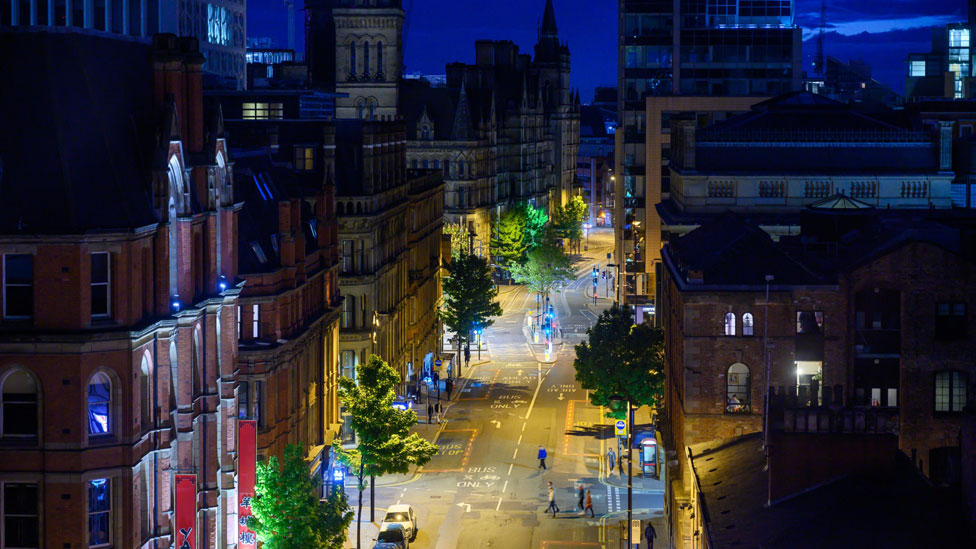
Reynhard Sinaga, a 36-year-old postgraduate student, had made this his home for more than seven years, living in a rented flat just a few moments' walk from Factory Nightclub.
Sinaga, originally from Indonesia, was a perpetual student. He already had four degrees and was studying for a doctorate. By night he was a serial sex offender.
He has been found guilty of drugging, raping and sexually assaulting 48 men, but police believe they are among at least 190 victims.
They are able to be so precise about these numbers because Sinaga filmed his attacks and collected what detectives call "trophies" - items or information stolen from his victims. Sinaga typically approached his victims in the street. The rapist operated in a small area surrounding his flat. His targets were men mostly in their late teens or early 20s who had been out drinking, often in the nearby nightclubs.
Some were on their way home, others had become separated from friends.
Many were too drunk to remember their conversation with Sinaga, but for those who did there was no indication of a sexual motive. Sinaga used various pretexts to entice each to his flat.
Some victims could recall being provided with a drink and then blacking out.
Are you affected by this?
BBC Action Line has support and more information on emotional distress
Greater Manchester Police said anyone who believes they might have been attacked by Sinaga can report information online or call its police line on 0800 092 0410 from inside the UK or 0207 158 0124 from abroad.
The force said anyone in need of support from specialist agencies could call 0800 056 0154 from within the UK or 0207 158 0011 from abroad.
Sinaga presented himself as a flamboyant, churchgoing academic who used the nickname "posh spice". A thin man of slight build and short stature, physically he appeared unthreatening. Several victims recall him smiling a lot.
It was this apparent harmlessness that enabled Sinaga to pose as a "good Samaritan", coaxing men he approached back to the flat.
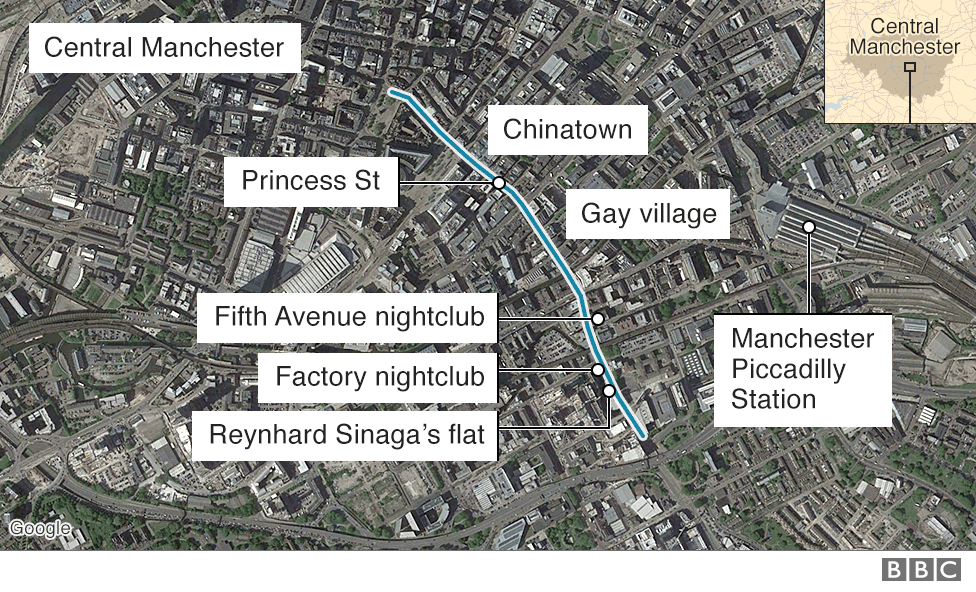 We know about the benign impression Sinaga created because dozens of victims gave testimony to police, with 48 of them appearing in court over the course of four trials.ost of his victims were living in Manchester at the time and, in all, 26 were students when they were attacked. One was waiting for his girlfriend outside Fifth Avenue nightclub - since renamed Fifth Manchester - when he was approached by a "small Asian guy" who seemed harmless. The man was invited back to Sinaga's flat to wait for his girlfriend, but recalled nothing further after being given a shot of clear liquid to drink. ~~~~~~~~~~~~~~Scroll down~~~~~~~~~~~~~~~~~~~~~~~
We know about the benign impression Sinaga created because dozens of victims gave testimony to police, with 48 of them appearing in court over the course of four trials.ost of his victims were living in Manchester at the time and, in all, 26 were students when they were attacked. One was waiting for his girlfriend outside Fifth Avenue nightclub - since renamed Fifth Manchester - when he was approached by a "small Asian guy" who seemed harmless. The man was invited back to Sinaga's flat to wait for his girlfriend, but recalled nothing further after being given a shot of clear liquid to drink. ~~~~~~~~~~~~~~Scroll down~~~~~~~~~~~~~~~~~~~~~~~
Another man described being "approached by a young Asian gentleman". He said he had a "vague recollection of explaining that my phone was dead and that I was trying to get a taxi but the taxis were passing me".
He added: "I think I can recall a conversation along the lines of, 'Would you like to come inside and charge your phone and have a quick chat,'" he told the court.
To him, Sinaga "didn't seem like an imposing character" and during their conversations in the apartment, he appeared to be "an honest, motivated person" with an interest in academic research.
The man told the court that soon after being offered a drink, he couldn't remember "a single thing until the next morning".
After waking, confused and disoriented, he left within five minutes.
Like almost every victim, he had no idea he had been raped until being approached by police.
Another victim remembered his friends putting him in a cab outside a club. His next recollection was waking up in a strange apartment.
When he asked Sinaga what had happened, he described providing care and shelter after finding him lying in the street.
Another victim believed Sinaga had been "really nice and had looked after him".
One victim, a teenage university student, managed to get Sinaga's mobile number as a precaution after waking up in the flat, and then having concerns that something might have been stolen from him.
When he rang to ask for more information about what happened, Sinaga described himself as a "good Samaritan" who had found him unconscious on the pavement.
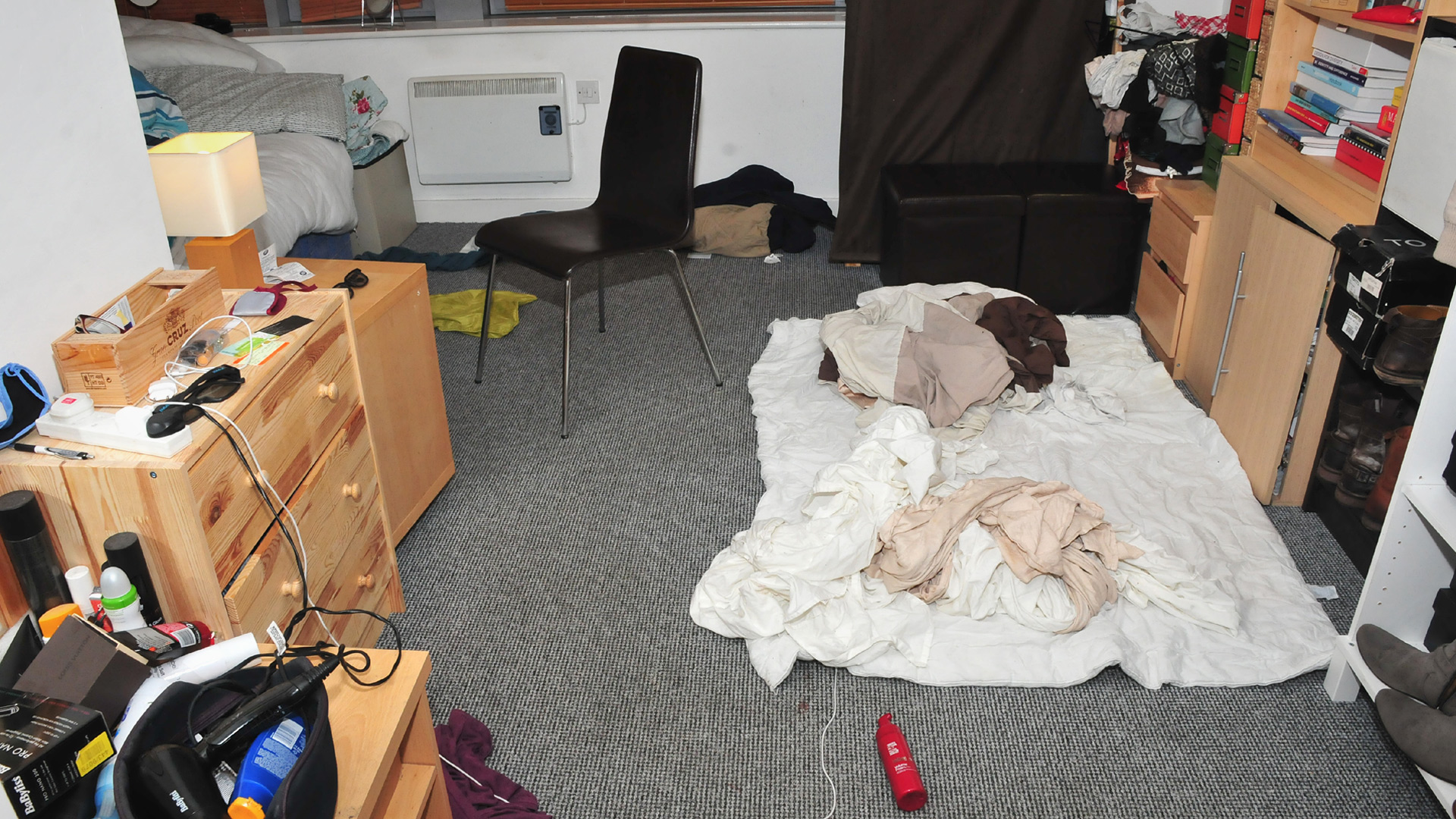
Another man remembered waking up on the floor, covered in a blanket, before thanking the flat's occupier for letting him stay over.
He suspected nothing, even though the person "refused to give me personal details" in order to assist with an insurance claim for a lost mobile phone.
The phone, like many others stolen from their owners, was later recovered from Sinaga's home by police.
Some victims felt incredibly unwell after regaining consciousness, sometimes naked and covered in vomit.
Unknown to them at the time, Sinaga had given his victims a drug - almost certainly GHB - which rendered them unconscious before he assaulted them.
What is GHB?
- Class C prohibited drug - colourless and odourless liquid or powder, usually dissolved in water
- Generates feelings of euphoria in very small doses; in only slightly larger amounts can cause unconsciousness and death
- Used by clubbers and in so-called "chemsex"; also frequently implicated in sexual offences
- Thought to account for thousands of hospital admissions each year, but statistics on its misuse remain sketchy
- Between 2007 and 2017 more than 200 deaths were linked to the drug; since 2014 it has been named as a murder weapon in five cases
- Closely related to GBL, a colourless liquid that sold is an industrial cleaner and converts to GHB in the body. GBL is only classed as Class C prohibited drug when knowingly intended for human consumption
- One victim, who woke up naked on Sinaga's floor feeling nauseous and panic-stricken, came to the conclusion he had been drugged, telling his fiancé about that suspicion but not about the condition in which he awoke.
Another man, who was told he could sleep on the floor, recalled waking twice during the night, on one occasion to be sick.
He remembered that on one of the occasions he was unable to move his arms and could feel himself being penetrated, before passing out again.
In the morning, he briefly spoke with Sinaga before leaving. He did not report what happened to police, until being approached by them.
It was the largest rape investigation in UK history.
Police found more than 100 of the men from clues in Sinaga's flat. But the identities of 70 men have not been established and police are now appealing for anyone who believes they may been abused by Sinaga to come forward.
The CPS's Ian Rushton says that Sinaga is probably the most prolific known rapist "anywhere in the world".

Depok, Indonesia
One of four children, Sinaga comes from a wealthy Indonesian family who live in Depok, a city within the Jakarta metropolitan area. His father is a banker and also a prominent businessman in the palm oil sector.
After obtaining a degree in architecture at the University of Indonesia in Depok, he moved to the UK in 2007 to study urban planning at the University of Manchester.
He went on to gain three degrees there before embarking on a doctorate in human geography at the University of Leeds - travelling there from Manchester when required.
His family wealth meant that he rarely worked, although he claims to have had stints in employment in hospitality at both Manchester football clubs and in a clothes shop. Manchester United have since said they have no record of him working at the club. He worked for a period at a bar in the city's Gay Village, the area where he spent much of his time socialising. He was also a regular at a local church.
After originally living in student accommodation, Sinaga moved to a rented flat in Montana House on Princess Street in 2011.
While his convictions cover a period of two and a half years, police believe his offences predate 2015. But they say they may never know the true extent of his crimes.
It came to an end in the summer of 2017.
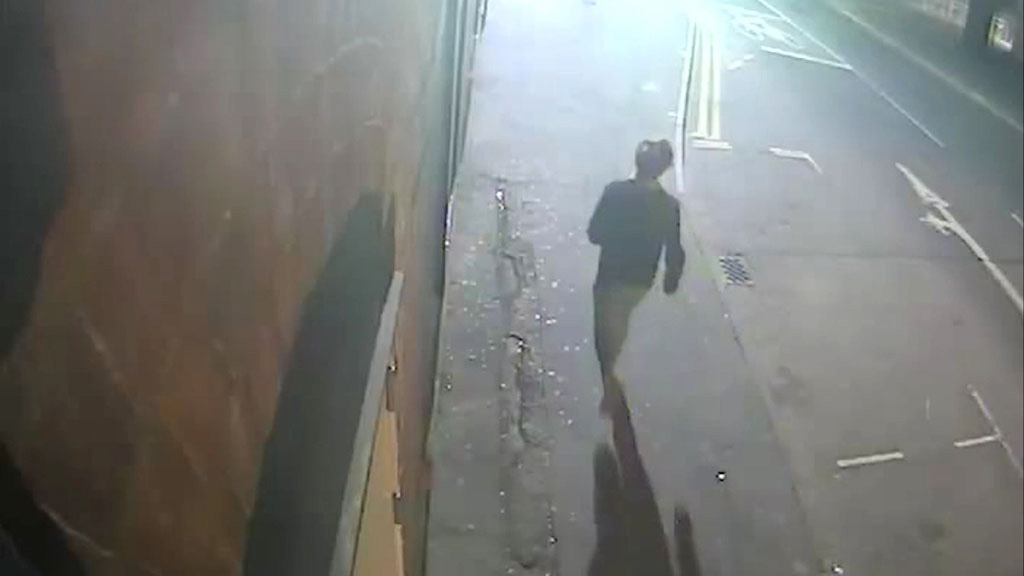 Sinaga was offending with abandon, sometimes night after night. In footage recovered from CCTV cameras covering his block of flats, he is seen leaving one evening only to return with a man 60 seconds later.
Sinaga was offending with abandon, sometimes night after night. In footage recovered from CCTV cameras covering his block of flats, he is seen leaving one evening only to return with a man 60 seconds later. It was just after midnight on 2 June 2017, when he approached his final victim.
A teenager, who left The Factory nightclub to get some fresh air after becoming separated from friends, agreed to go to Sinaga's flat after it was suggested he could try to contact them from there.
The man recalled nothing further until waking several hours later being sexually attacked by Sinaga.
He immediately pushed Sinaga away, who responded by screaming "intruder" and "help", before repeatedly biting the teenager.
The man hit Sinaga several times, escaped from the flat, and then called police, who arrived to a chaotic scene.
Sinaga, who was discovered semi-conscious with serious injuries, was at first viewed sympathetically, and the teenager was arrested for assault.
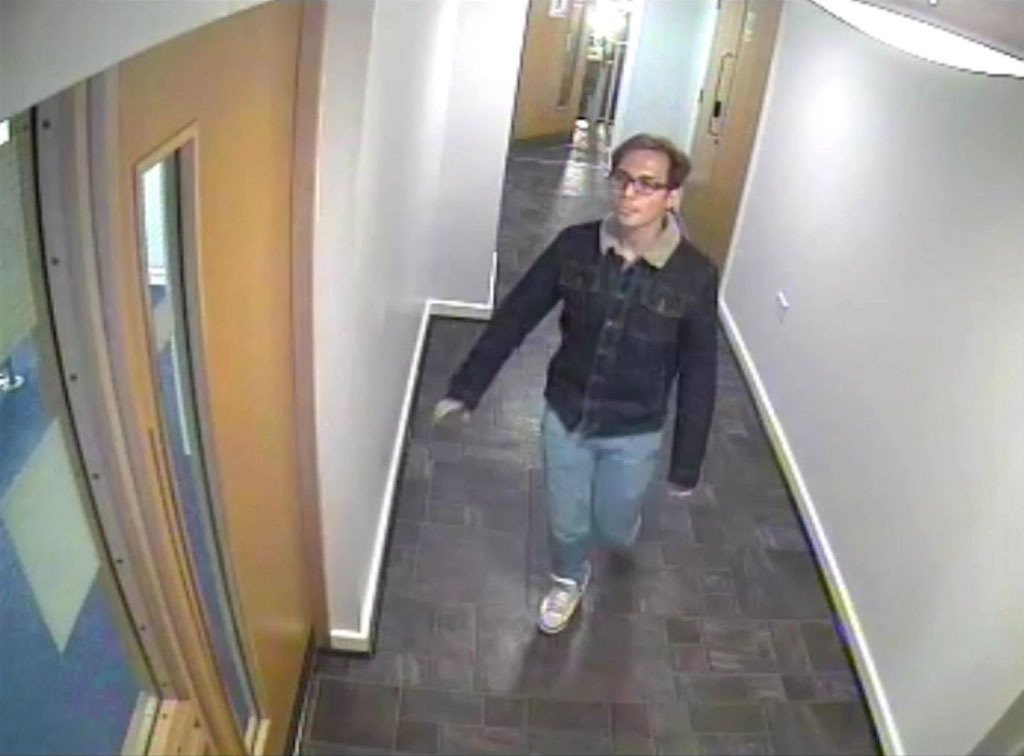
But Sinaga's behaviour in hospital began to arouse suspicion. He kept asking officers to have a mobile phone brought to him from his flat.
Police asked him to confirm the pin number before they would hand it over. However Sinaga gave a series of false numbers, then tried to grab the phone after providing the correct one.
The officer became so suspicious that he seized the phone as potential evidence and, when it was checked, a video recording was found of Sinaga raping the arrested teenager.
It was the start of what the officer overseeing the investigation, Assistant Chief Constable Mabs Hussain, calls "an absolutely unprecedented case".
He says the inquiry has been like "piecing a jigsaw together without the picture".
Another of Sinaga's mobiles had somehow ended up in the pocket of the final victim.
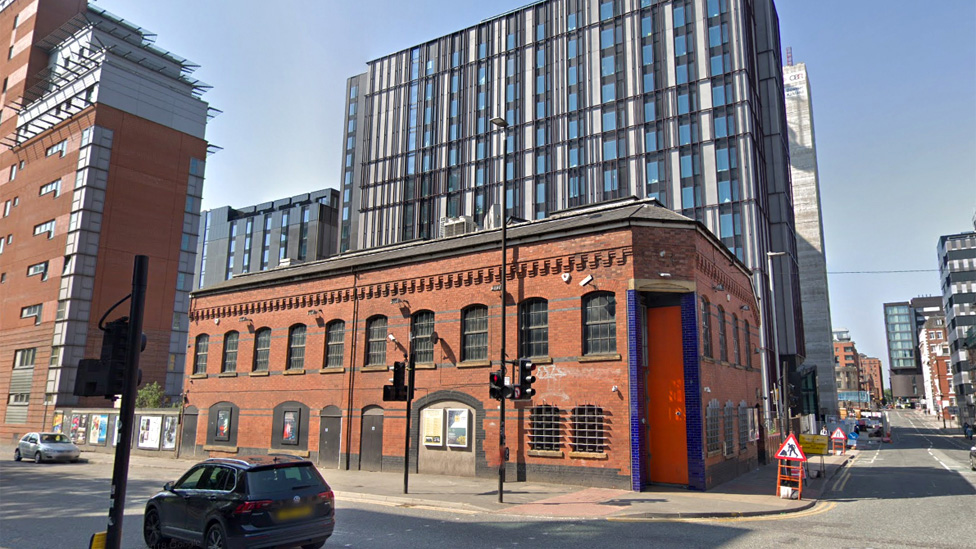
Google Street view
Between them, the two phones had been used to capture about 800 videos of Sinaga raping or sexually assaulting unconscious men.
The victims, usually snoring loudly, were often repeatedly raped over several hours. In some of the films, Sinaga is seen to forcibly hold men down who, though unconscious, were visibly distressed or made attempts to push him away. In others, victims are seen to vomit while being attacked.
To find the men, detectives used both the films and "trophies" collected by Sinaga - phones, watches, ID cards from their wallets, images that Sinaga had downloaded from their social media profiles, searches about them he conducted online.
When they lacked identifying information, investigators tried facial recognition technology, approached local universities, and asked other police forces around the UK if they knew any of the men.
Officers also considered whether Sinaga might have killed any of his victims with fatal drug overdoses, examining potential links to unsolved deaths or missing people, but there was no evidence to suggest this was the case.
When officers made a positive identification, that person would be approached and told he had been a victim of sexual offences.
Lisa Waters, of the St Mary's Sexual Assault Referral Centre, says their crisis workers accompanied detectives on these visits in order to "offer immediate emotional and practical support".
She says that being told what happened "can be quite overwhelming, very confusing".
"What we didn't want to do was to drop the bombshell and then just disappear and leave these men with no support," she says.
A large programme was put in place to provide ongoing support.
Waters says many of the men have chosen not to tell anybody else about what happened to them.
"That might be because they might want to protect their own psychological health; it might be because they're ashamed to tell other people; it might be because they're fearful of other people's responses," she says.
Dozens of those approached did not want to go through the court process.
Sinaga was found to have told unsuspecting friends about some of the rapes, passing them off as consensual sexual conquests.
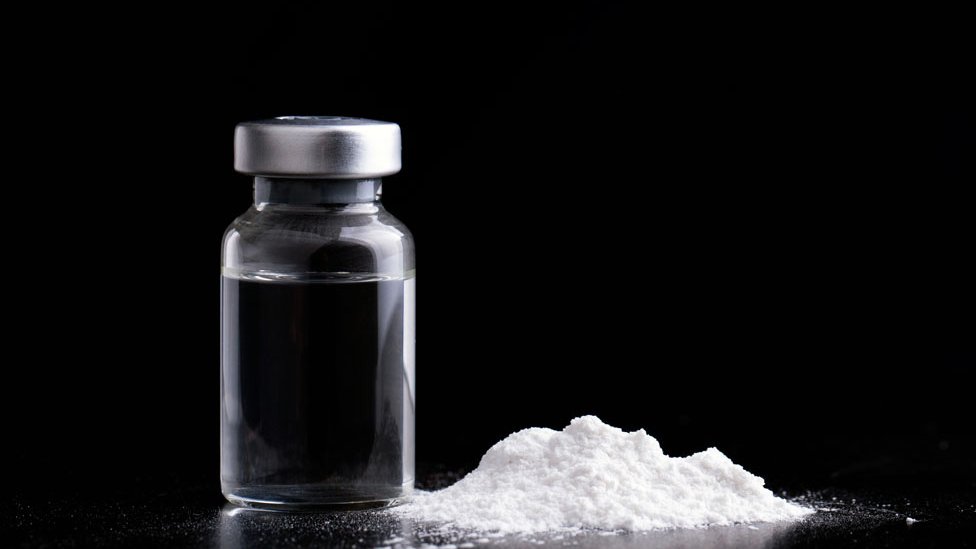
In messages about the first victim who went to court, Sinaga boasted about the attack on New Year's Eve in 2014.
"I didn't get my new year kiss, but I've had my first sex in 2015 already," he wrote, adding that the man was "straight in 2014. 2015 is his breakthrough to the gay world hahaha".
During another boast about what he presented as his prowess with "straight" men, Sinaga wrote: "Take a sip of my secret poison, I'll make you fall in love."
Police officers have spoken to other men, tracked down as a result of still images discovered in the flat that date from before 2015. These men recall being there, but not what happened. There is no other evidence available to show that they were sexually assaulted.
Only one previous report to police was linked to Sinaga after his arrest, dating from April 2017, when the victim had woken disorientated and unwell in a strange room with an Asian male.
 |
JOHN MORRIS / ALAMY STOCK PHOTO |
He quickly left, but later that day had flashbacks of being sexually assaulted and - two days afterwards - he called the police.
However, the man was unsure of the property in which he had been assaulted, meaning inquiries focused on two nearby hotels, neither of which had had any guests who matched the suspect's description.
Despite the overwhelming evidence, Sinaga pleaded not guilty to all 159 charges, forcing a series of four trials in which his victims had to give evidence and jurors had to watch hours of distressing videos.
Court rules meant that nothing could be reported in the media and each jury was unaware of the wider case against him.
Sinaga gave evidence in the first and last of the trials, running what the judge called a "ludicrous defence" which involved him claiming that each victim had agreed to fulfil his "sexual fantasy" by being penetrated while being filmed and pretending to be asleep.
When this scenario was suggested to one victim in court, he responded by saying it was "absolutely farcical".
Sinaga changed his story during the trials.
In the first trial, he denied that the loud snoring heard in some films was snoring at all, insisting it was just "breathing sounds".
But, by the time of the final trial, he claimed the snoring was actually just "role-play".
It was only halfway through the first trial that he admitted penetrating most of the victims on that indictment.
In the witness box he came across as vain and self-absorbed, telling jurors: "I make myself available all the time… I may look like a 'lady boy' and it seems very popular amongst curious men who are looking for a gay experience."
When entering and exiting court he often appeared cheerful, as if he was enjoying the process.
In the absence of the jury, the judge repeatedly asked defence counsel whether any of the evidence could be agreed, to spare jurors watching every video.
But Sinaga would not agree and, because he insisted each victim was conscious and consenting, the videos had to be played to demonstrate this was a lie.
The prosecution case was that Sinaga used the drug GHB to incapacitate his victims.
No trace of the drug was found in his apartment and - due to the circumstances of Sinaga's arrest - the final victim was not tested quickly enough for its presence to be established.
However, the symptoms shown by the hundreds of videos were all consistent with GHB intoxication, as were the descriptions of him providing clear liquid shots, and each trial heard expert evidence about its effects.
GHB was used by Stephen Port, who murdered four men between June 2014 and September 2015. The men were given fatal overdoses of the drug. Port was also convicted of raping or assaulting several living victims using GHB.
The impact on Sinaga's victims is vast.
Waters says that "some of the men have found it very difficult to function in everyday life".
This has resulted in substance misuse, people unable to go to work, students unable to finish university, and others having to leave home after feeling unable to function any longer within their families.
She adds that "some men have been suicidal and we've had to try to help them come to terms with that and how we can make them safe".
Dr Sam Warner, author of a report about the psychological impact on Sinaga's victims, says a loss of power coupled with an absence of memory can be "extremely frightening, disturbing, upsetting because that goes to the heart of how you make sense of yourself, how you understand your experiences".
"In a situation where people have been incapacitated through drugs they may have no flashback to that particular event," she says.
"What they will have is the flashback to being told, however sensitively done, because suddenly they become a rape victim at that point."
She says the stress and trauma "may continue throughout people's lives".
In a series of statements read in court, the men themselves described the impact.
"I felt numb. I was totally shocked, embarrassed, betrayed and very angry," one said.
"His actions were disgusting, unforgiveable. He has massively abused my trust in humanity."
Another man said: "I want Sinaga to spend the rest of his life in prison. Not only for what he has done to me but for what he has done to the other lads and the misery and stress he has caused them."
A further victim said: "I remember the day the police contacted me, it is a day I will never forget because it changed my life forever."
Another: "I wish the worse for him, I want him to feel the pain and sufferance I have felt. He has destroyed a part of my life."
Throughout all four trials, Sinaga displayed not a glimmer of empathy or contrition.
His persistent smile, so often used to comfort and disarm, was instead revealed to be a mark of his cruelty.
Comments